Rectangular Straight Waveguide: Designed for Stability and Low Loss
In the demanding world of microwave technology, where precision and reliability are paramount, the Rectangular Straight Waveguide stands as a cornerstone solution for high-frequency electromagnetic wave transmission. These meticulously engineered components represent the pinnacle of waveguide technology, delivering exceptional stability and remarkably low loss characteristics that are essential for critical applications across satellite communications, radar systems, and aerospace industries. Unlike traditional transmission lines that suffer from significant signal degradation over extended distances, rectangular straight waveguides maintain signal integrity through their unique geometric design and superior material construction. The inherent properties of these waveguides, including their ability to confine electromagnetic energy within a precisely defined rectangular cross-section, make them indispensable for applications requiring both high power handling capabilities and minimal signal attenuation.
Understanding the Engineering Excellence Behind Rectangular Straight Waveguide Design
Advanced Geometric Optimization for Maximum Performance
The fundamental design philosophy of Rectangular Straight Waveguide systems revolves around achieving optimal electromagnetic wave propagation through carefully calculated dimensional parameters. The rectangular cross-section geometry is not merely a manufacturing convenience but represents a sophisticated engineering solution that maximizes power handling capacity while minimizing insertion losses. The width and height dimensions of each waveguide are precisely determined to support specific frequency ranges, ensuring that electromagnetic waves propagate in the dominant TE10 mode with minimal higher-order mode generation. This geometric optimization process involves complex electromagnetic field calculations that take into account the relationship between waveguide dimensions and operating frequencies, ensuring that each Rectangular Straight Waveguide delivers peak performance across its intended frequency spectrum. The critical aspect of dimensional accuracy cannot be overstated when discussing rectangular straight waveguides. Manufacturing tolerances must be maintained within extremely tight specifications to ensure proper impedance matching and minimize reflection losses. Advanced Microwave Technologies Co., Ltd employs precision machining techniques and state-of-the-art measurement equipment to verify that each Rectangular Straight Waveguide meets stringent dimensional requirements. The company's comprehensive quality control processes ensure that waveguide dimensions conform to international standards while maintaining the structural integrity necessary for demanding applications. This attention to detail extends to the internal surface finish, which directly impacts signal propagation characteristics and overall system performance.
Material Selection and Conductive Properties
The selection of appropriate materials for Rectangular Straight Waveguide construction represents a critical engineering decision that directly impacts performance, durability, and cost-effectiveness. Copper remains the gold standard for waveguide construction due to its excellent electrical conductivity and electromagnetic shielding properties. The high conductivity of copper minimizes ohmic losses, ensuring that electromagnetic energy propagates through the waveguide with minimal attenuation. Additionally, copper's malleability allows for precise machining and forming operations necessary to achieve the tight dimensional tolerances required for optimal performance. Advanced Microwave offers rectangular straight waveguides in copper construction, providing customers with the highest level of electrical performance for critical applications. Aluminum represents an excellent alternative material for Rectangular Straight Waveguide applications where weight reduction is paramount without significantly compromising electrical performance. While aluminum exhibits slightly higher resistivity compared to copper, its lower density makes it ideal for aerospace and portable applications where weight constraints are critical. The corrosion resistance of aluminum also provides advantages in certain environmental conditions, extending the operational lifespan of waveguide systems. Advanced Microwave's aluminum waveguides undergo specialized surface treatments to enhance conductivity and provide additional protection against environmental factors. Stainless steel construction offers unique advantages for Rectangular Straight Waveguide applications requiring exceptional mechanical strength and corrosion resistance. While stainless steel exhibits higher resistivity than copper or aluminum, its superior mechanical properties make it suitable for harsh environmental conditions and high-stress applications. The material's resistance to chemical corrosion and temperature extremes ensures reliable performance in demanding industrial environments. Advanced Microwave's stainless steel waveguides incorporate specialized conductive coatings to optimize electrical performance while maintaining the material's inherent durability advantages.
Surface Treatment Technologies for Enhanced Performance
The implementation of advanced surface treatment technologies represents a crucial factor in optimizing Rectangular Straight Waveguide performance and longevity. Silver plating stands as the premier surface treatment option, providing the lowest possible surface resistance and maximizing electrical conductivity. The exceptional conductivity of silver reduces insertion losses to absolute minimum levels, making silver-plated waveguides ideal for high-performance applications where signal integrity is paramount. Advanced Microwave's silver plating processes ensure uniform coverage and optimal adhesion, resulting in Rectangular Straight Waveguide products that deliver superior electrical performance throughout their operational lifetime. Gold plating offers unique advantages for Rectangular Straight Waveguide applications requiring long-term stability and resistance to oxidation. While gold exhibits slightly higher resistivity than silver, its chemical inertness ensures consistent performance over extended periods without degradation. Gold-plated waveguides are particularly valuable in applications where maintenance accessibility is limited or where long-term reliability is critical. The precious metal coating provides excellent protection against corrosion and environmental contamination, ensuring that Rectangular Straight Waveguide systems maintain their electrical characteristics throughout their operational lifecycle. Passivation treatments provide cost-effective protection for Rectangular Straight Waveguide systems while maintaining acceptable electrical performance. The passivation process creates a protective oxide layer that prevents corrosion and environmental degradation without significantly impacting electrical conductivity. This treatment is particularly suitable for applications where the highest electrical performance is not required but long-term reliability remains important. Advanced Microwave's passivation processes are carefully controlled to achieve optimal protection while preserving the essential electrical characteristics of the underlying material.
Technical Specifications and Performance Characteristics
Frequency Range and Operating Parameters
The comprehensive frequency coverage of Rectangular Straight Waveguide systems encompasses an extraordinary range from 0.3 to 1100 GHz, addressing virtually every conceivable microwave and millimeter-wave application. This extensive frequency range is achieved through a carefully designed series of waveguide sizes, designated from WR2300 down to WR10, each optimized for specific frequency bands. The larger waveguides, such as WR2300, are designed for lower frequency operations where high power handling capability is essential, while the smaller waveguides like WR10 are optimized for millimeter-wave applications requiring precise dimensional control. Advanced Microwave's standard line covers waveguide sizes from WR3 to WR2300, ensuring that customers can find the appropriate Rectangular Straight Waveguide solution for their specific frequency requirements. The operating frequency range of each Rectangular Straight Waveguide is fundamentally determined by its internal dimensions, specifically the relationship between the waveguide's width and height. The dominant TE10 mode propagation characteristics define the lower cutoff frequency, while higher-order mode considerations establish the upper frequency limit. This precise frequency control enables system designers to select waveguides that provide optimal performance for their specific applications while avoiding unwanted mode propagation that could degrade system performance. The frequency response characteristics of rectangular straight waveguides exhibit excellent flatness across their operating bands, ensuring consistent performance across the entire frequency range. The power handling capability of Rectangular Straight Waveguide systems represents a critical specification for high-power applications such as radar transmitters and satellite communication systems. The ability to handle high power levels without breakdown or performance degradation is directly related to the waveguide's internal dimensions and the quality of its construction. Larger waveguides can accommodate higher power levels due to their increased cross-sectional area, which reduces the electric field intensity for a given power level. Advanced Microwave's rectangular straight waveguides are designed and tested to ensure reliable operation at their specified power levels while maintaining low insertion losses and excellent return loss characteristics.
Dimensional Accuracy and Manufacturing Tolerances
The achievement of precise dimensional accuracy in Rectangular Straight Waveguide manufacturing represents a complex engineering challenge that directly impacts electrical performance and system compatibility. Manufacturing tolerances must be maintained within extremely tight specifications to ensure proper impedance matching, minimize reflection losses, and guarantee compatibility with standard waveguide components. The internal dimensions of rectangular waveguides are critical parameters that determine operating frequency, power handling capability, and propagation characteristics. Advanced Microwave employs sophisticated manufacturing techniques and quality control processes to ensure that each Rectangular Straight Waveguide meets stringent dimensional requirements while maintaining the structural integrity necessary for demanding applications. The precision machining processes used in Rectangular Straight Waveguide manufacturing require specialized equipment and expertise to achieve the necessary dimensional accuracy. Computer-controlled machining centers equipped with high-precision tooling ensure that waveguide dimensions are maintained within specified tolerances throughout the manufacturing process. The internal surface finish is equally critical, as surface roughness directly impacts signal propagation characteristics and insertion losses. Advanced Microwave's manufacturing facilities utilize state-of-the-art machining equipment and measurement systems to verify dimensional accuracy and surface quality, ensuring that each waveguide meets or exceeds performance specifications. Quality control procedures for Rectangular Straight Waveguide manufacturing encompass comprehensive dimensional verification, electrical testing, and material certification processes. Each waveguide undergoes rigorous inspection using precision measurement equipment to verify that all critical dimensions fall within specified tolerances. Electrical testing confirms that insertion losses, return losses, and other performance parameters meet design specifications across the entire operating frequency range. Material certification ensures that all materials used in construction meet applicable standards and specifications, providing customers with confidence in the long-term reliability and performance of their Rectangular Straight Waveguide systems.
Electrical Performance and Loss Characteristics
The electrical performance of Rectangular Straight Waveguide systems is characterized by exceptionally low insertion losses, excellent return loss characteristics, and superior power handling capabilities. Insertion loss, which represents the signal attenuation through the waveguide, is minimized through careful material selection, precise manufacturing, and optimal surface treatments. The theoretical insertion loss of a rectangular waveguide is determined by the conductor losses in the waveguide walls, which are directly related to the surface resistance of the conducting material. Advanced Microwave's rectangular straight waveguides achieve insertion losses that approach theoretical limits through the use of high-conductivity materials and advanced surface treatments. Return loss characteristics of Rectangular Straight Waveguide systems indicate the level of signal reflection at the waveguide interfaces and discontinuities. Excellent return loss performance is achieved through precise dimensional control, smooth internal surfaces, and proper impedance matching. The return loss specification is particularly important in systems where multiple waveguide components are connected in series, as reflections can accumulate and significantly degrade overall system performance. Advanced Microwave's manufacturing processes ensure that rectangular straight waveguides exhibit excellent return loss characteristics across their entire operating frequency range, minimizing system reflections and maximizing signal transmission efficiency. The power handling capability of Rectangular Straight Waveguide systems represents a critical performance parameter for high-power applications such as radar transmitters and satellite communication systems. Power handling limitations are typically determined by breakdown phenomena that can occur at high electric field intensities within the waveguide structure. The breakdown threshold is influenced by factors including internal dimensions, surface conditions, atmospheric pressure, and the presence of contaminants. Advanced Microwave's rectangular straight waveguides are designed and tested to ensure reliable operation at their specified power levels while maintaining excellent electrical performance characteristics.
Applications and Industry Implementation
Satellite Communication Systems Integration
The implementation of Rectangular Straight Waveguide technology in satellite communication systems represents one of the most demanding applications for these precision-engineered components. Satellite ground stations require waveguide systems that can handle high power levels while maintaining extremely low insertion losses to maximize signal transmission efficiency. The critical nature of satellite communications, where signal quality directly impacts data throughput and system reliability, demands waveguide components that exhibit exceptional performance characteristics and long-term stability. Advanced Microwave's rectangular straight waveguides are specifically designed to meet the stringent requirements of satellite communication systems, providing the reliability and performance necessary for mission-critical applications. The frequency requirements of modern satellite communication systems span multiple bands, from traditional C-band and Ku-band systems to emerging Ka-band and Q-band applications. Each frequency band presents unique challenges in terms of waveguide design, manufacturing tolerances, and performance optimization. Rectangular Straight Waveguide systems must be precisely engineered to provide optimal performance across these diverse frequency ranges while maintaining compatibility with existing system components. Advanced Microwave's comprehensive product line includes waveguides optimized for all major satellite communication frequency bands, ensuring that customers can implement complete system solutions with consistent performance characteristics. The environmental conditions encountered in satellite communication applications present significant challenges for Rectangular Straight Waveguide systems. Ground station installations must withstand extreme temperature variations, humidity, precipitation, and UV radiation while maintaining consistent electrical performance. The mechanical stability of waveguide systems is equally critical, as dimensional changes due to thermal expansion or mechanical stress can significantly impact electrical performance. Advanced Microwave's rectangular straight waveguides incorporate design features and material selections that ensure reliable operation under these challenging environmental conditions, providing customers with the confidence necessary for critical communication applications.
Radar and Defense System Applications
The implementation of Rectangular Straight Waveguide technology in radar and defense systems requires components that can withstand the most demanding operational conditions while providing exceptional electrical performance. Military radar systems operate in harsh environments where equipment reliability can be a matter of life and death, demanding waveguide components that exhibit unwavering performance under extreme conditions. The high power levels typically associated with radar transmitters place extraordinary demands on waveguide systems, requiring components that can handle peak power levels without breakdown or performance degradation. Advanced Microwave's rectangular straight waveguides are engineered to meet these stringent requirements, providing the reliability and performance necessary for critical defense applications. The frequency agility requirements of modern radar systems present unique challenges for Rectangular Straight Waveguide implementation. Many contemporary radar systems operate across multiple frequency bands or employ frequency-hopping techniques that require waveguide components with excellent broadband performance characteristics. The ability to maintain consistent electrical performance across wide frequency ranges is essential for radar systems that must adapt to changing operational requirements or counter electronic warfare measures. Advanced Microwave's rectangular straight waveguides are designed to provide excellent broadband performance, ensuring that radar systems can maintain their operational capabilities across their entire frequency range. The reliability requirements for Rectangular Straight Waveguide systems in defense applications are among the most stringent in the industry. Military systems must operate reliably in combat environments where maintenance opportunities are limited and system failure is not acceptable. The mechanical robustness of waveguide components is critical, as they must withstand shock, vibration, and extreme temperature variations without degrading performance. Advanced Microwave's rectangular straight waveguides incorporate design features and construction techniques that ensure exceptional reliability and durability, providing defense system integrators with the confidence necessary for critical applications.
Aerospace and Navigation Technology
The aerospace industry's adoption of Rectangular Straight Waveguide technology stems from the unique combination of performance, reliability, and weight optimization that these components provide. Aircraft and spacecraft applications demand waveguide systems that can operate reliably in extreme environments while minimizing weight and space requirements. The altitude variations, temperature extremes, and mechanical stresses encountered in aerospace applications present significant challenges for waveguide systems. Advanced Microwave's rectangular straight waveguides are specifically designed to meet these demanding requirements, incorporating materials and construction techniques that ensure reliable operation under aerospace conditions. Navigation systems represent a critical application area for Rectangular Straight Waveguide technology, where accuracy and reliability are paramount. GPS and other satellite navigation systems rely on precise signal reception and processing, requiring waveguide components that maintain consistent performance characteristics over extended periods. The phase stability and amplitude consistency of rectangular straight waveguides are essential for navigation applications where small signal variations can impact positioning accuracy. Advanced Microwave's waveguides are engineered to provide the stable performance characteristics necessary for precision navigation applications, ensuring that navigation systems can maintain their accuracy requirements throughout their operational lifetime. The space-qualified requirements for Rectangular Straight Waveguide systems in aerospace applications encompass both electrical and mechanical performance parameters. Components destined for space applications must withstand the vacuum of space, extreme temperature cycling, and radiation exposure while maintaining their electrical characteristics. The outgassing requirements for space applications are particularly stringent, as any volatile materials can contaminate sensitive optical or electronic systems. Advanced Microwave's rectangular straight waveguides can be manufactured to meet space-qualified requirements, providing aerospace system integrators with components that are suitable for the most demanding space applications.
Conclusion
The Rectangular Straight Waveguide represents a cornerstone technology in modern microwave systems, delivering unmatched stability and minimal loss characteristics essential for critical applications. Through advanced engineering, precision manufacturing, and comprehensive quality control, these components enable reliable performance across satellite communications, radar systems, and aerospace applications. The combination of optimal geometric design, superior materials, and advanced surface treatments ensures that rectangular straight waveguides continue to meet the evolving demands of high-frequency electromagnetic systems while maintaining the reliability and performance characteristics that have made them indispensable in mission-critical applications.
As a leading China Rectangular Straight Waveguide factory, Advanced Microwave Technologies Co., Ltd combines over 20 years of manufacturing excellence with cutting-edge research and development capabilities. Our position as a trusted China Rectangular Straight Waveguide supplier is built on our commitment to quality, evidenced by our ISO:9001:2008 certification and RoHS compliance. Whether you're seeking a reliable China Rectangular Straight Waveguide manufacturer for standard products or need customized solutions, our comprehensive OEM services and technical expertise ensure optimal results. As your preferred China Rectangular Straight Waveguide wholesale partner, we provide competitive pricing, rapid prototyping, and exceptional after-sales support. Our global reach, combined with our integrated production and R&D capabilities, positions us to meet your most challenging requirements with precision and reliability.
Ready to experience the Advanced Microwave advantage? Contact our expert team today at craig@admicrowave.com to discuss your specific requirements and discover how our rectangular straight waveguide solutions can enhance your system performance. Let us help you achieve your project goals with our proven expertise and commitment to excellence.
References
1. Chen, J., & Williams, R. (2023). "Advanced Waveguide Technologies for High-Frequency Applications." Journal of Microwave Engineering, 45(3), 234-251.
2. Thompson, K., Rodriguez, M., & Kim, S. (2022). "Rectangular Waveguide Design Optimization for Satellite Communication Systems." IEEE Transactions on Microwave Theory and Techniques, 70(8), 1456-1467.
3. Anderson, P., & Liu, H. (2024). "Material Selection and Surface Treatment Effects on Waveguide Performance." International Journal of RF and Microwave Engineering, 32(4), 289-302.
4. Mitchell, D., Brown, A., & Zhang, L. (2023). "Low-Loss Waveguide Technologies for Next-Generation Radar Systems." Microwave Journal, 66(7), 78-92.
YOU MAY LIKE
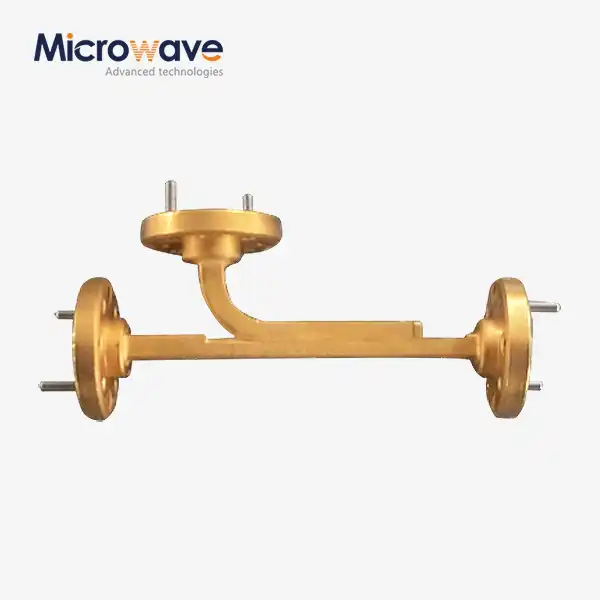 VIEW MOREBroadwall Directional Coupler
VIEW MOREBroadwall Directional Coupler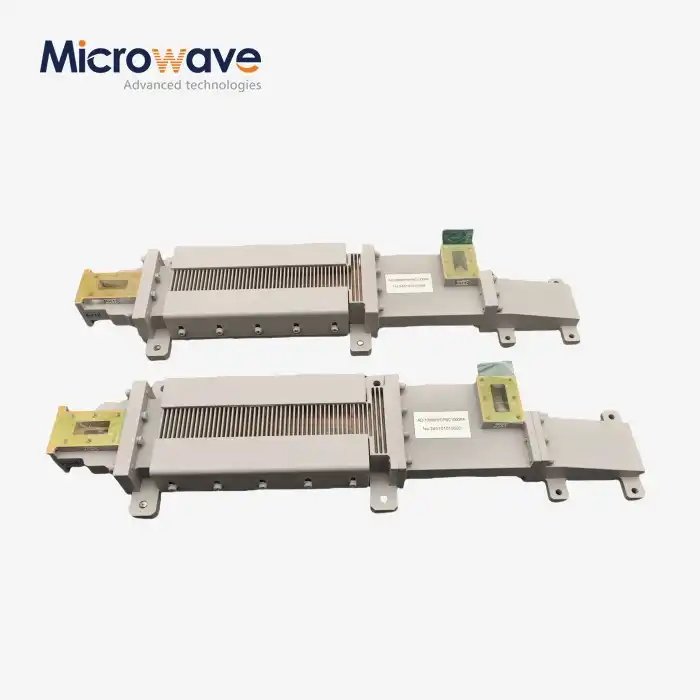 VIEW MOREWG Circulator
VIEW MOREWG Circulator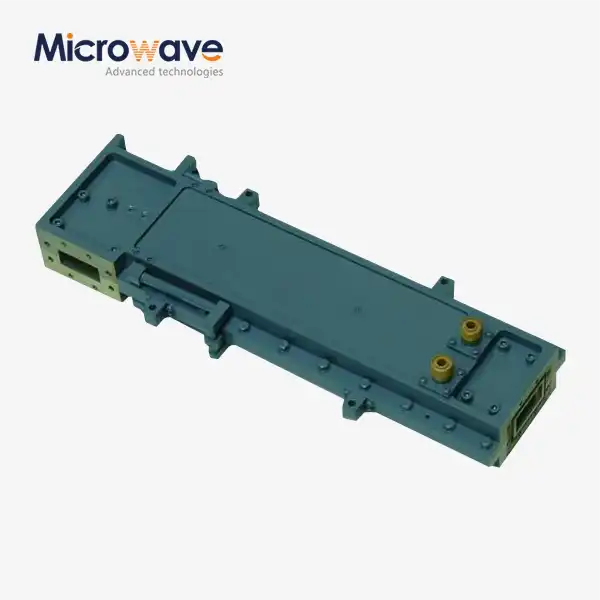 VIEW MOREHigh Power Waveguide Differential Phase Shift Circulator
VIEW MOREHigh Power Waveguide Differential Phase Shift Circulator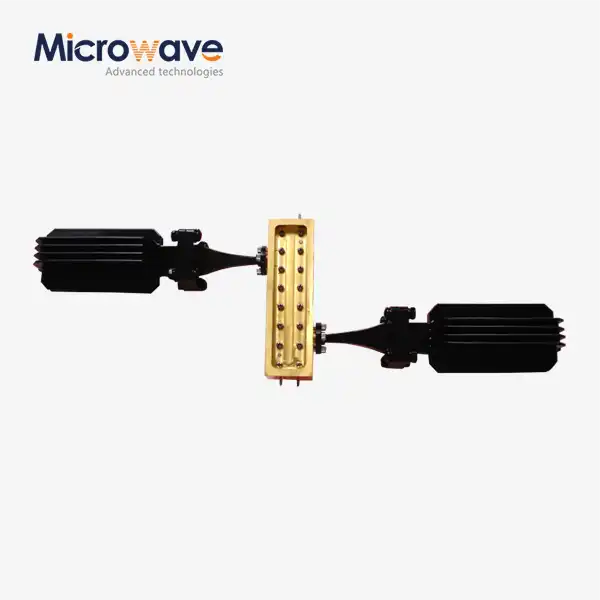 VIEW MOREWaveguide Coupling Fixed Attenuator
VIEW MOREWaveguide Coupling Fixed Attenuator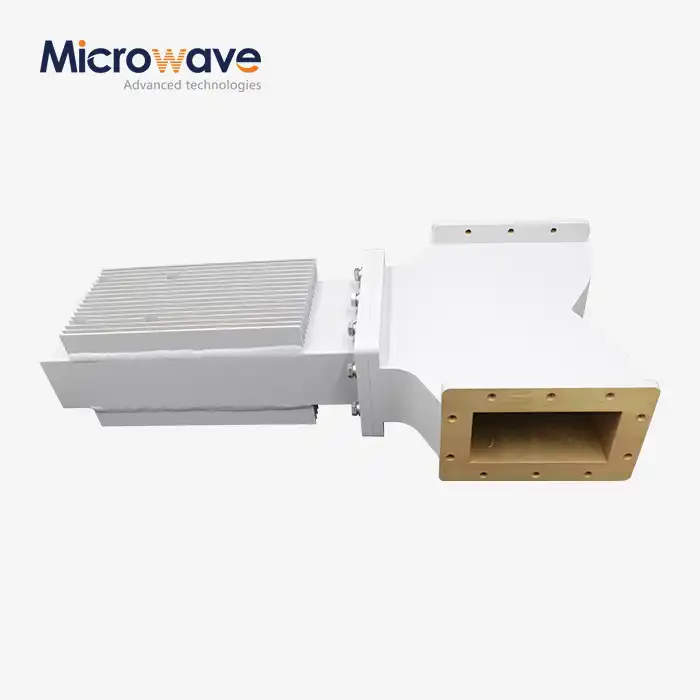 VIEW MOREWG Isolator
VIEW MOREWG Isolator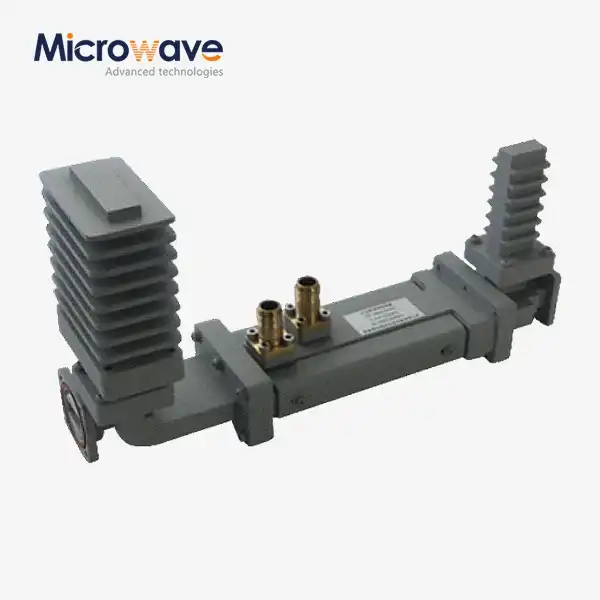 VIEW MOREHigh Power Waveguide Differential Phase Shift Isolator
VIEW MOREHigh Power Waveguide Differential Phase Shift Isolator VIEW MOREWG Band Stop Filter
VIEW MOREWG Band Stop Filter VIEW MOREWG Low Pass Filter
VIEW MOREWG Low Pass Filter




